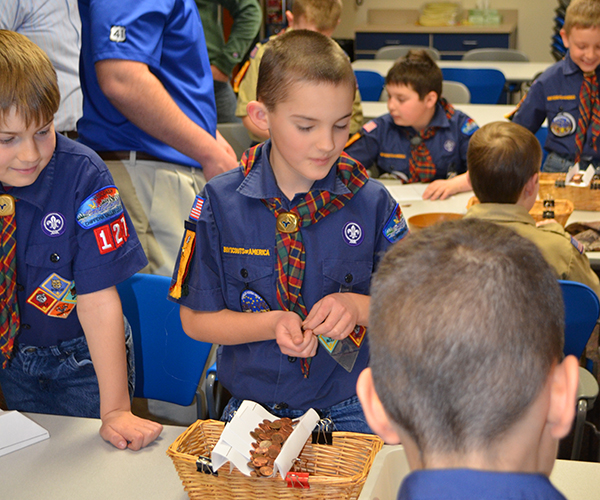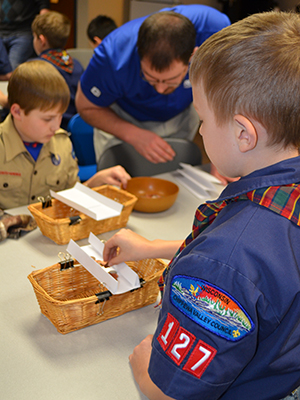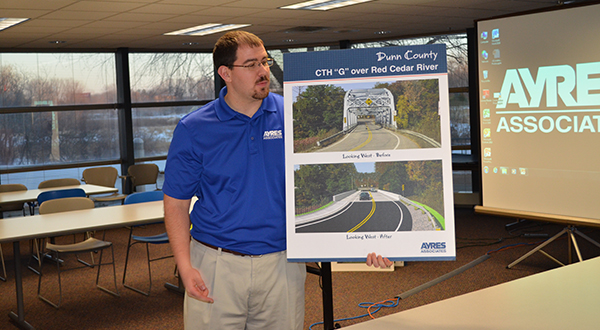From Paper Bridges to Concrete Canoes, Scouts Wowed by Ayres Engineers

Kolton Burrows watches Nathan Nosker add pennies to his paper bridge during a visit at
Ayres’ Eau Claire office, where their Cub Scout pack learned about what engineers do.
A group of Cub Scouts and Boy Scouts made paper bridges and learned about concrete canoes among other things when they sat down with members of the Young Professionals group at our Eau Claire, Wisconsin, headquarters a couple of weeks ahead of Engineers Week.
Chris Marcum, a structural designer, told attendees from Cub Scout Pack 127 and Boy Scout Troop 107 of Eau Claire about the main elements of highway bridges – the superstructure (the part we drive on) and the substructure, made up of abutments (funny word, Chris acknowledged) and piers holding up the superstructure. Chris told the Scouts that bridges made of concrete are often the most cost-efficient and easy to maintain because they don’t have to be repainted periodically to prevent corrosion brought on by weather and salt trucks. Steel bridges are sometimes the way to go when an especially long span is a must, Chris told the boys.

Kody Burrows, left, gets help from Ayres structural engineer Chris Marcum as Ryan Statz adds pennies to his paper bridge.
Then it was time for the Scouts to try their hand at designing their own bridge. Each Scout folded a piece of paper any way he chose, spanned a basket with his bridge, and loaded it with pennies to see how much weight it took to collapse. Two bridges stood up under the weight of well over 100 pennies. Way to go, boys!
Janelle Skoyen of Ayres’ water resources staff told the Scouts how much fun it can be to be an engineering student in college, including competing in Concrete Canoe and Steel Bridge clubs within the American Society of Civil Engineers collegiate chapters. The boys could not hide their disbelief at how a canoe made of concrete could float!
Ayres staff talked about opportunities to travel abroad and apply skills learned in the classroom to real-life projects, such as building solar cookers and learning about sustainable energy practices with a community in Nicaragua or helping Engineers Without Borders to supply clean water in Guatemala.
The boys impressed our panel of experts with their great questions and discussion. Our hope is that we inspired them to explore the environment around them, continue to be curious and ask questions, and consider a career in engineering!
If you’re looking for ideas on how to get your youngsters interested in careers in engineering, start here. And please share your Engineers Week educational efforts by leaving a comment below.

Chris Marcum of Ayres explains the types of materials that can comprise bridges.

Post a comment: